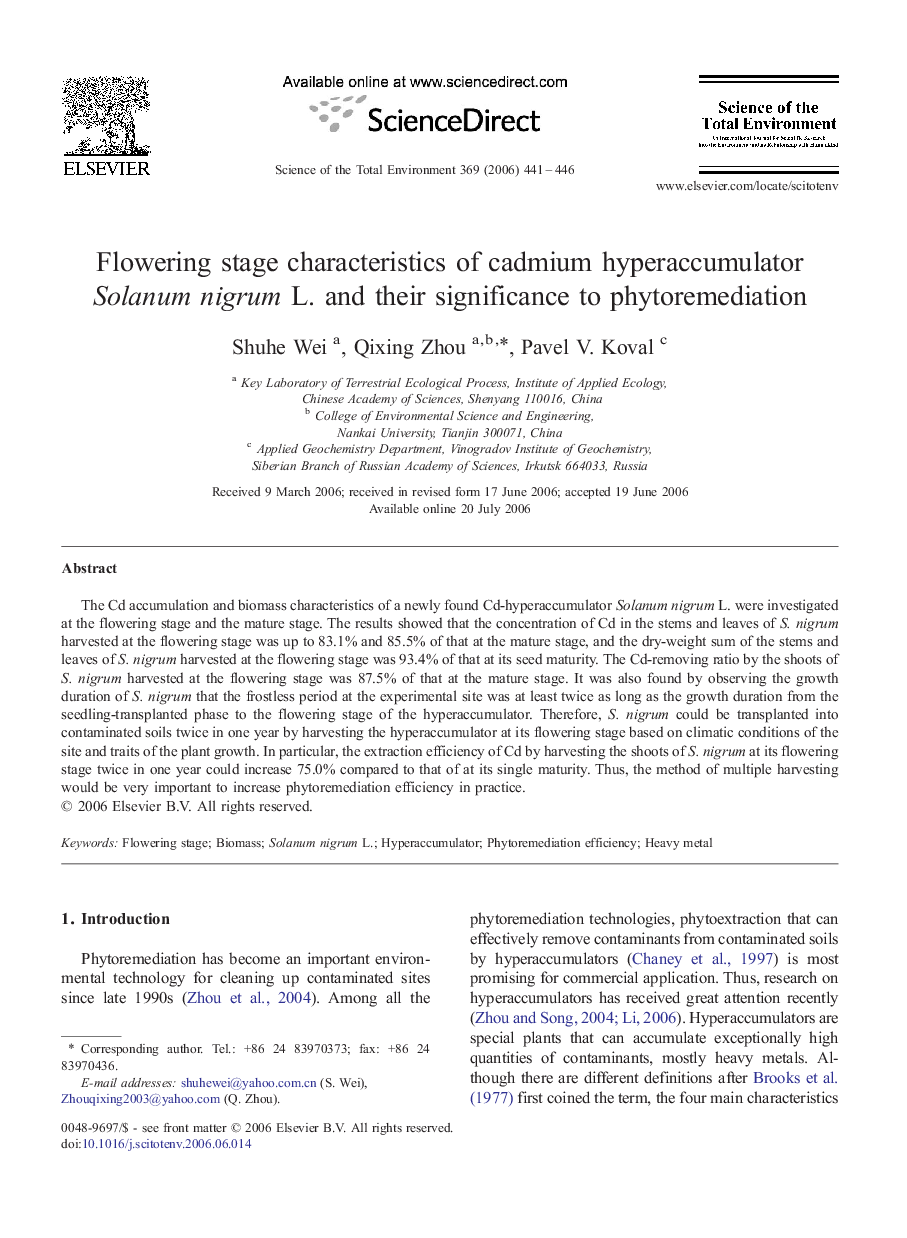| Article ID | Journal | Published Year | Pages | File Type |
|---|---|---|---|---|
| 4433970 | Science of The Total Environment | 2006 | 6 Pages |
The Cd accumulation and biomass characteristics of a newly found Cd-hyperaccumulator Solanum nigrum L. were investigated at the flowering stage and the mature stage. The results showed that the concentration of Cd in the stems and leaves of S. nigrum harvested at the flowering stage was up to 83.1% and 85.5% of that at the mature stage, and the dry-weight sum of the stems and leaves of S. nigrum harvested at the flowering stage was 93.4% of that at its seed maturity. The Cd-removing ratio by the shoots of S. nigrum harvested at the flowering stage was 87.5% of that at the mature stage. It was also found by observing the growth duration of S. nigrum that the frostless period at the experimental site was at least twice as long as the growth duration from the seedling-transplanted phase to the flowering stage of the hyperaccumulator. Therefore, S. nigrum could be transplanted into contaminated soils twice in one year by harvesting the hyperaccumulator at its flowering stage based on climatic conditions of the site and traits of the plant growth. In particular, the extraction efficiency of Cd by harvesting the shoots of S. nigrum at its flowering stage twice in one year could increase 75.0% compared to that of at its single maturity. Thus, the method of multiple harvesting would be very important to increase phytoremediation efficiency in practice.
